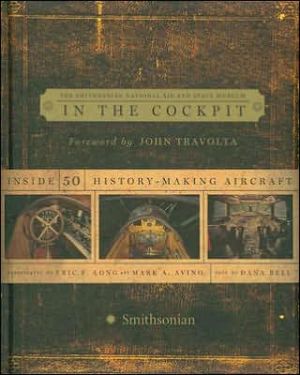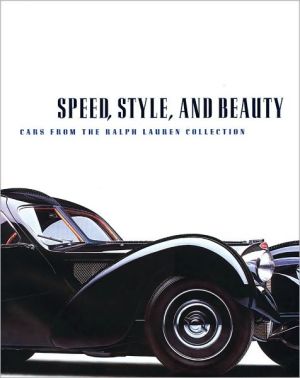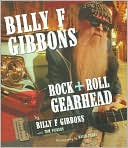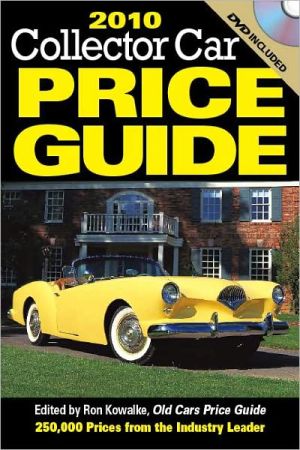Art of the Automobile: The 100 Greatest Cars
Award-winning automotive historian, author, and photographer Dennis Adler takes you on a whirlwind tour through more than a century of automotive history, from the first production motorcar, the 1886 Benz Patent Motorwage, to fabled makes including Hispano-Suiza, Duesenberg, packard, and Hudson\ More than 200 stunning color photographs define and detail the remarkable styling and revolutionary mechanical engineering for 100 greatest cars ever built. Adler, in accordance with the world's...
Search in google:
Award-winning automotive historian, author, and photographer Dennis Adler takes you on a whirlwind tour through more than a century of automotive history, from the first production motorcar, the 1886 Benz Patent Motorwage, to fabled makes including Hispano-Suiza, Duesenberg, packard, and HudsonMore than 200 stunning color photographs define and detail the remarkable styling and revolutionary mechanical engineering for 100 greatest cars ever built. Adler, in accordance with the world's leading automotive dseigners, collectors, and authorities, picks the top ten cars of all time—breathtaking cars that have become the motoring icons of the twentieth century.The Art of the Automobile reveals not only the makes and models that have left an indelible mark on the motoring world, but why and how these specific cars have become so important to the history of the automobile itself. For anyone whose pulse quickens at the sound of a Ferrari V-12, or whose heart races at the sight of a glorious 1930s Duesenberg, here, truly, is the essential car book of the century.
INTRODUCTION\ There are great cars, and then there are the truly great cars, those that have not only withstood the test of time but steadfastly defied it--cars that have remained desirable and valuable for more than 50 years, to become the most treasured automotive artifacts of our time.\ Many of the automobiles pictured in this book are here because they are stunning examples of the motorcar and require no further credentials. Others have been selected because they were benchmarks in the history of the automobile in this century-the 1948 Porsche Gmund Limousine, for example, the car that laid the foundation for the future of Porsche.\ With the better part of this century behind them, it's safe to say that the majority of rare American and European motorcars featured in The Art of the Automobile have become virtually irre-placeable, and that the, longer they survive, the more collectable and valuable they will become. However, while rarity and attrition may be the basis for determining what is and is not collectable, the true deciding factor is desirability, best summed, up by nineteenth-century author Margaret Wolfe Hungerford, who wrote the prophetic words "Beauty is 'in the eye of the beholder."\ With an automobile, this is a quality far more difficult to define. The pretentious styling of a 1930s Delage or Delahaye bodied by Jacques Saoutchik or Joseph Figoni is as likely to turn stomachs as heads. And while some people are enamored by the towering 1959 Cadillac tail fin, others find it vulgar, an expression of the wretched excess that proliferated throughout an entire decade in America. Therefore, choosing 100 cars torepresent the greatest eras in the history of the automobile is a formidable responsibility, but one we gladly undertake in the hope that the controversy sure to follow will incite even greater soul-searching among automotive enthusiasts.\ Within the collector car world there are certain marques that are a given, cars that have always seemed larger than life.\ "There is a clear separation between the great versus the almost great," claims world-renowned collector car authority Don Williams of the Blackhawk Collection in Danville, California. "This has always been true. The same cars that are the most desirable today are the very same that appealed to early collectors like D. Cameron Peck, George Waterman, Kirk Gibson, and Bill Harrah. No matter how much time passes, these will always be the greatest cars ever built." Collectors refer to them today as "the great cars." They were built in very limited quantities--usually less than 50, sometimes as few as a half-dozen, and occasionally only a single example.\ When you talk about modern automobile production, which runs in the millions, the very notion of building 50 -cars is almost beyond comprehension, yet that is exactly what makes antique, classic, and early postwar automobiles so intriguing. The temerity of a company producing only a handful, or a single example, of its product seems to fly in the face of reason, adding yet- another irre-sistible dimension to these legendary motorcars.\ How do you pick 100 cars out of the thousands of makes and models that have come down the road in the last 100 years?\ Perhaps the best way to answer that is with another question:\ "What defines great?"\ Ask an antique car collector, and the answer will be technology. Ask Jay Leno I and he'll be the first to mention the Mercer Raceabout--a car that was at the forefront of automotive technology in the early 1900s. Of course, Jay will also heap laurels on his '09 Stanley Steamer--another superb turn-of-the-century motorcar, and any of his 1930s-era Model J Duesenbergs for their particular technological benchmarks.\ Broad-minded collectors who own a variety of cars, from antiques and classics to postwar big steel, muscle cars and early Ferraris, Lamborghinis, and Porsches usually have a bias toward models that represented the best cars of their time, in their time. Every automobile selected for the top 100 was chosen for its exceptional styling, its advanced engineering, or its influence on the automotive world. How else could a Volkswagen Beetle be on the same list as a Model J Duesenberg!\ The truth is that there are more great cars behind us than there are ahead. The majority of cars chosen were built before 1950, and s one need only glance back at the first half of the twentieth century to realize that the greatest advances in engineering and design occurred between the turn of the century and the beginning of World War II. The balance of essential cars come from the 1950s, when America rediscovered the automobile, the 1960s, when America rediscovered itself, and the early 1970s, when we discov-ered that bigger isn't better, especially when there isn't any gasoline.\ This is not to say that there haven't been some wonderful automobiles built in the past 30 years. In fact, some remarkable cars have been introduced in just the last few years, such as the Ferrari 550 Maranello, the Jaguar XK-81 and the Dodge Viper GTS, but they have yet to prove themselves in the greatest test of all, the test of time.\ To make the final selection of cars, opinions gathered from many of the world's leading car collectors formed the basis for a primary list containing 200 automobiles. The second 100 are listed in the appendix, and each was a worthy contender.\ Among the leading authorities consulted over the past several years were former General Motors vice president and director of design David Holls, renowned car collectors Otis Chandler, Sam Mann, Robert M. Lee, Jay Leno, Jerry J. Moore, William B. Ruger, Jr., Bruce Meyer, Noel Thompson, Gene Epstein, and Don Williams, Nethercutt Collection president Dick Nolind and collection curator Skip Marketti, retired Ford Motor Company vice president of corporate design Jack Telnack, retired General Motors vice president of design Chuck Jordan, and the man who helped put Chrysler design at the forefront of American automotive styling, DaimlerChrysler executive vice president Tom Gale. Their opinions covering different eras and historically significant cars formed the criteria for establishing not only the final list of 100 cars, but the top 10 cars of the twentieth century.







